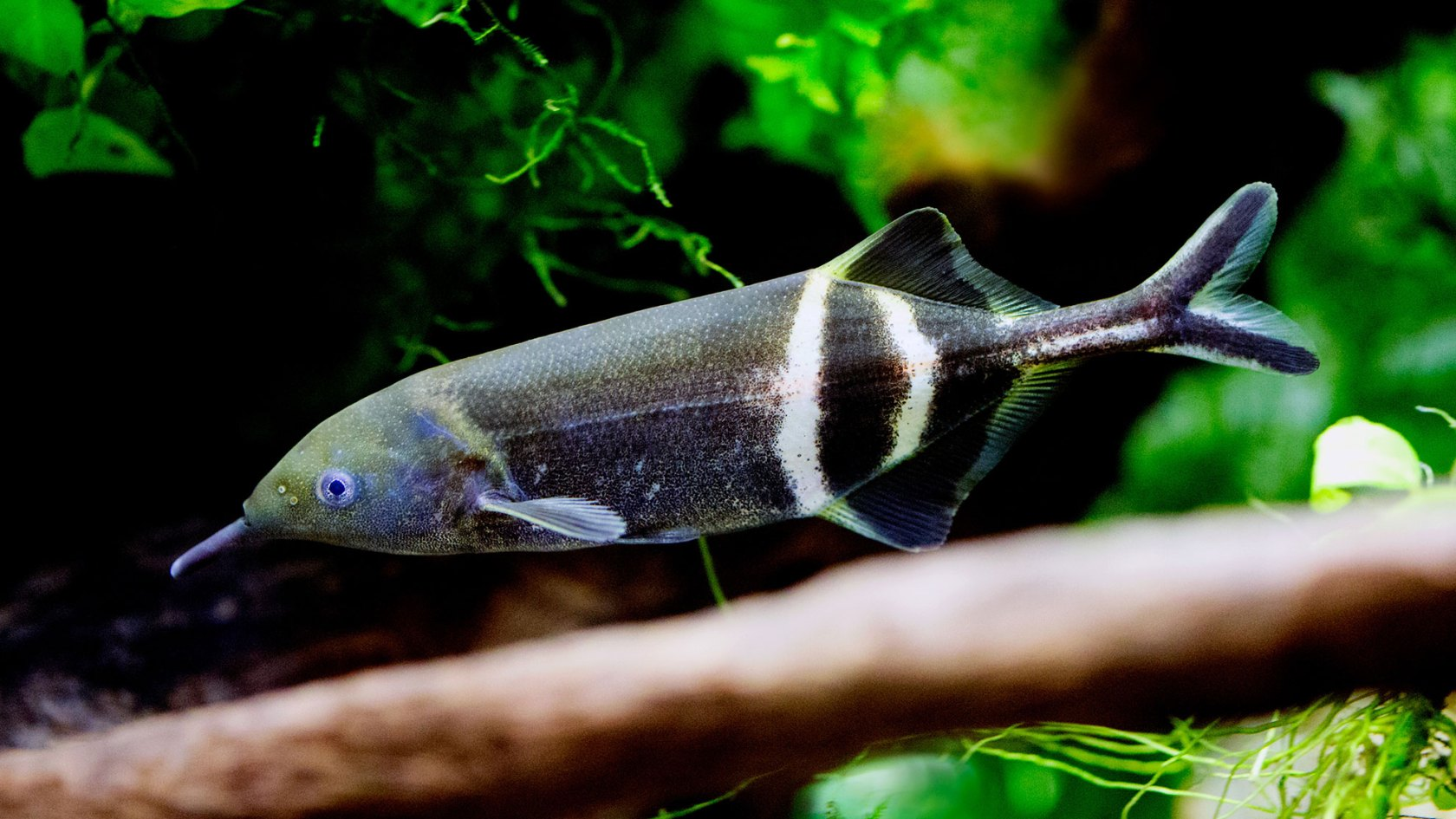Electric Fish NeuroAI is at the forefront of research that merges biological insights with artificial intelligence to enhance our understanding of collective intelligence. These fascinating creatures, particularly the weakly electric elephantnose fish, have evolved to navigate their environments using electric fields, providing unique insights into emergent communication among species. By studying the behaviors of electric fish, researchers aim to model complex interactions that inform the development of advanced AI systems. With their ability to communicate through electric organ discharges (EODs), these fish exemplify the principles of coordination and social dynamics in nature. As scientists delve deeper into the world of Electric Fish NeuroAI, the implications for both biological understanding and AI technology could redefine how we perceive intelligence in various forms.
The study of NeuroAI through the lens of electric fish opens new avenues for understanding communication and intelligence among living organisms and artificial entities. These unique aquatic creatures, such as the elephantnose fish, employ electrical signals to interact with one another, creating a natural laboratory for observing collective behaviors. By examining their electro-sensory capabilities, researchers can gain valuable insights into the dynamics of group interactions and decision-making processes. This exploration of emergent communication helps bridge the gap between biological instincts and artificial intelligence development. As we push the boundaries of what we know about such species, the knowledge gained transcends simple observations and contributes to advancements in AI systems designed to mimic their social structures.
Understanding Electric Fish and Their Unique Communication
Electric fish, such as the elephantnose fish, exhibit remarkable methods of communication through electric pulses, allowing them to navigate their environments effectively. By generating electric fields, they interact with one another and their surroundings in ways that highlight the complexities of their behavior. This electro-sensory capability is not just a fascinating adaptation but also serves as a valuable model for researchers examining the mechanisms behind communication within various systems, including artificial intelligence. By understanding how electric fish convey messages through electrical discharges, scientists can gain insights into the nature of communication itself.
In nature, these fish utilize their electric pulses for various purposes—ranging from social interactions to mating rituals. The consistent and intricate patterns of their electric organ discharges provide a framework for studying emergent communication in both biological and artificial contexts. This unique interaction emphasizes that effective communication does not merely rely on verbal language but can also manifest through systematic and coordinated signals. As researchers delve deeper into the lives of electric fish, they unlock essential lessons applicable to fields like NeuroAI, where understanding communication dynamics can propel advances in creating sophisticated AI systems.
Electric Fish and Collective Intelligence: Lessons for AI Systems
Collective intelligence in electric fish reveals a fascinating parallel to the development of AI systems. Researchers like Kanaka Rajan draw attention to how these creatures leverage social interactions, showcasing decision-making through shared information. This phenomenon is not unlike how AI agents operate in collaborative environments, where they must communicate and coordinate effectively to achieve common goals. The elephantnose fish’s strategy of signaling to gain foraging advantages demonstrates a foundational principle of resource sharing that could inspire the design of more advanced cooperative AI systems.
Simulations of collective behavior in electric fish provide a modeling platform for engineers working to enhance AI communication strategies. By experimenting with artificial agents, Rajan’s research illustrates that cooperation can evolve depending on environmental pressures, similar to how AI agents can adapt their operations based on context. Moreover, the emergent behaviors observed among electric fish serve as a model for understanding how groups of AI can solve complex problems more efficiently. This avenue of study not only expands the knowledge on electric fish but also holds profound implications for designing AI frameworks that mimic natural patterns of collaboration.
Rajan’s work indicates that the dynamics of cooperation and competition are pivotal in both natural settings and artificial environments. As the simulation studies reveal how food availability prompts shifts in social behaviors, researchers can better understand the thresholds that trigger cooperative versus competitive patterns in AI systems. This knowledge could guide the development of more adaptable AI networks capable of optimizing their functions according to situational demands, further bridging the gap between biological insights and technological innovation.
The Emergence of Emergent Communication in Electric Fish
Emergent communication, a term used to describe interactions that give rise to complex systems behavior, is vividly illustrated through the social dynamics of electric fish. These underwater creatures, through their electric pulses, provide a prime example of how individual actions can culminate in sophisticated group behavior. By studying their interactions, researchers can explore theories of social behavior and communication that apply across a spectrum of species and even into the realm of artificial intelligence, providing a bridge from natural phenomena to technological advancements.
The communication system of the elephantnose fish showcases how emergent communication functions within a socially intricate framework. Each electric pulse they emit contributes not only to their own survival but also aids in the collective navigation of their species, much like how AI systems can share information to optimize collective problem-solving. Observing these dynamics can reveal insights into how AI systems can evolve from simple rules to more complex collaborative strategies, harnessing the principles of collective intelligence evident in nature’s designs.
Artificial Intelligence Inspired by Electric Fish Behavior
As researchers continue to explore the behaviors of electric fish, the implications for artificial intelligence grow increasingly profound. The study of their electric communication offers a unique lens through which the development of NeuroAI can be enhanced, allowing for the design of AI systems that fundamentally understand and mimic the patterns observed in nature. By modeling the electric pulses of these fish in computational frameworks, scientists can create AI agents that effectively collaborate, leading to greater efficiencies and innovative solutions.
Developing AI systems that mimic the communication strategies of electric fish could revolutionize how information is shared and processed in technological applications. The principles of emergent communication highlight that enhancing the interaction between AI agents can take advantage of collective intelligence, potentially solving problems that are currently beyond the capability of individual agents. By integrating these biologically-inspired frameworks into AI design, researchers aim to create systems that not only perform tasks but also adapt and evolve based on their interactions, much like the electric fish.
Evolutionary Dynamics of Electric Fish and AI Agents
The evolutionary dynamics observed in electric fish present exciting research avenues for artificial intelligence. The behaviors that these fish develop over generations underscore the importance of environmental factors on social interactions, whether in nature or modeled within AI. By replicating these evolutionary pressures in simulations, researchers like Rajan can track how cooperative or competitive behaviors emerge over time, offering invaluable insights into optimizing the interactions within groups of AI agents.
Understanding how electric fish adapt their strategies in response to resource availability teaches important lessons for algorithmic design in AI systems. Just as these fish modify their social structures based on external conditions, AI agents can be programmed to adjust their interactions based on situational dynamics. This adaptability could lead to the emergence of robust AI networks that reflect the nuanced social behaviors seen in natural populations, potentially opening doors to unprecedented collaboration and innovation in AI functionalities.
Applications of Cooperative AI Systems Inspired by Electric Fish
The principles derived from studying electric fish extend to various applications in cooperative AI systems, particularly in enhancing joint tasking and resource allocation. The social behaviors exhibited by these fish when foraging for food can inspire AI networks that learn to distribute tasks effectively based on group strategies. By fostering collaboration similar to that seen in electric fish interactions, engineers can create AI systems that respond dynamically to both challenges and opportunities in their environments.
The concept of swarming behavior in electric fish, where individuals work together for mutual benefits, parallels current trends in AI development. Such swarms can optimize efficiency and problem-solving abilities much like biological agents do in nature. With ongoing research focused on simulating these behaviors, researchers could unlock powerful frameworks for AI applications, from resource management in nature conservation to improving logistics in urban planning.
Research Challenges in NeuroAI and Electric Fish Studies
Researching the connection between electric fish and NeuroAI involves numerous challenges that necessitate interdisciplinary collaboration. The complexity of simulating biological behaviors in artificial environments requires sophisticated modeling techniques and robust computational frameworks. Further exploration of how these electric fish communicate and cooperate can guide scientists in addressing the intricacies of both natural and artificial communication systems.
One of the pressing challenges in this field is understanding how emergent behaviors and social dynamics can be reliably translated into AI. As researchers endeavor to apply insights from electric fish, they must consider factors such as environment variability and agent interaction complexity. This ongoing research not only pushes the boundaries of NeuroAI but also cultivates a deeper appreciation for the intelligent behaviors arising naturally in the animal kingdom.
Future Perspectives on AI Development Using Electric Fish Insights
The future of AI development inspired by electric fish promises an intriguing landscape, where bio-inspired algorithms lead to significant advancements. As researchers continue to uncover the secrets of how electric fish navigate and communicate, these principles can be integrated into AI models for enhanced teamwork and coordination among agents. A growing emphasis on cooperative designs in AI systems is crucial if they are to address global challenges more effectively.
Looking ahead, the study of collective intelligence through the lens of electric fish could serve as a foundation for developing AI agents capable of complex, adaptive behaviors. By utilizing these natural behaviors to inform the design of AI systems, researchers can explore possibilities for creating advanced networks that not only think and learn but also communicate as effectively as the organisms they are modeled after.
Frequently Asked Questions
How do electric fish contribute to our understanding of NeuroAI?
Electric fish, particularly species like the elephantnose fish, have demonstrated complex communication through electric pulses, which aids researchers in understanding NeuroAI. Their ability to manifest collective intelligence through cooperative behaviors offers insights into how natural systems can inform the design of AI systems, enhancing emergent communication techniques in artificial agents.
What is the significance of collective intelligence in electric fish and NeuroAI research?
Collective intelligence observed in electric fish is crucial for NeuroAI research as it showcases how interactions among different agents can lead to complex behaviors. The study of these fish can help develop AI systems that mimic emergent communication, leading to improved collaborative problem-solving and adaptability in technology.
Can behaviors of electric fish inform the development of new AI systems?
Yes, the behaviors exhibited by electric fish can significantly inform new AI system development. By modeling the collective intelligence and communication patterns of these fish, researchers can create AI agents that not only cooperate effectively but also learn from one another, potentially leading to advancements in multi-agent systems.
What role do electric organ discharges play in the communication of electric fish?
Electric organ discharges (EODs) are vital for the communication of electric fish like the elephantnose fish. These electric pulses serve multiple functions, including navigation, mating, and establishing social hierarchies. Understanding how these discharges facilitate social interactions can help scientists enhance communication protocols in AI systems inspired by biological models.
How does studying electric fish enhance our understanding of social dynamics in AI systems?
Studying electric fish enhances our understanding of social dynamics in AI systems by revealing how simple communication methods can lead to complex interactions and coordinated behaviors. Insights gained from electric fish regarding cooperation and competition can be applied to improve the design of AI systems that need to operate cohesively within crowds or groups.
What can we learn about emergent communication from electric fish?
Emergent communication in electric fish provides valuable lessons on how complex social dynamics can arise from simple individual interactions. Researchers can leverage this knowledge to enhance the communication abilities of AI systems, enabling them to engage in more effective teamwork and problem-solving, much like social animals.
How does the research on electric fish impact the future of AI systems?
Research on electric fish impacts the future of AI systems by providing foundational insights into collective intelligence and emergent communication. As AI systems increasingly mimic natural behaviors, this research will help create agents that can adapt, cooperate, and make decisions intelligently in dynamic environments.
What are the implications of collective intelligence in electric fish for AI swarm technology?
The implications of collective intelligence in electric fish for AI swarm technology are profound. By studying how these fish communicate and cooperate, researchers can develop swarms of AI agents that work together more efficiently, leading to improved technological applications in areas such as robotics, data analysis, and resource management.
| Key Points |
|---|
| Electric fish, particularly elephantnose fish, are studied for their unique ability to communicate via electric fields. This behavior provides insight into NeuroAI and collective intelligence. |
| Research led by Kanaka Rajan aims to uncover how interactions among electric fish can model multi-agent intelligence, helping to better understand dynamics in societies. |
| Electric fish emit electric organ discharges (EODs) to navigate their environments, communicate, and establish social behaviors. |
| Studies show that elephantnose fish exhibit remarkable collective intelligence, leveraging group dynamics to enhance foraging efficiency. |
| Computer simulations matching the behavior of these fishes reveal how cooperation and competition arise based on resource availability. |
| The findings could influence AI interactions, urging the development of collaborative AI systems, or ‘swarms’, that exhibit similar collective intelligence. |
Summary
Electric Fish NeuroAI offers a fascinating glimpse into the interconnected dynamics of collective intelligence within biological systems. The study of electric fish, notably the elephantnose fish, has illustrated how their unique communication through electric pulses not only facilitates their survival but also provides invaluable insights for the development of AI technologies. By investigating how these fish interact and cooperate, researchers are laying the groundwork for advanced AI systems capable of mimicking such adaptive behaviors, promising enhancements in collaborative problem-solving capabilities.



